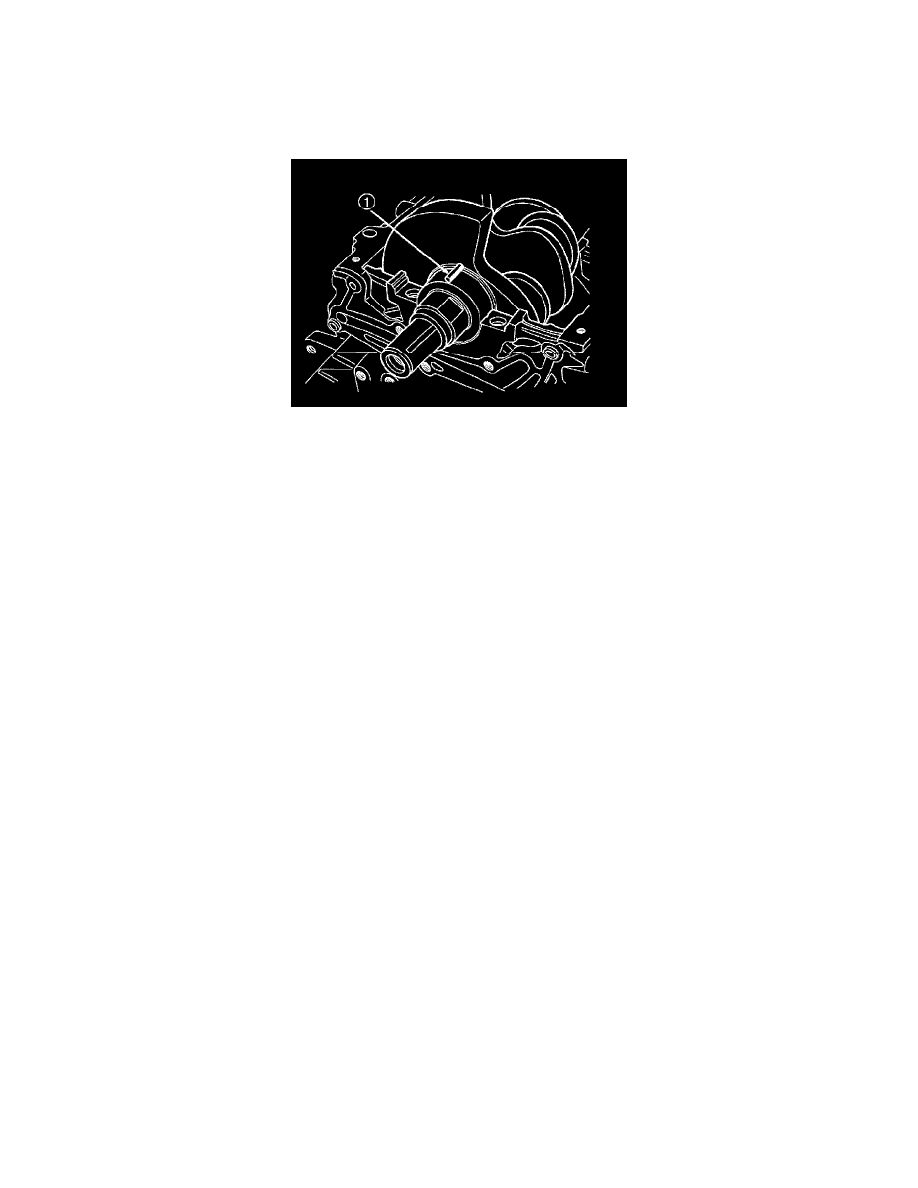Crossfire SRT-6 V6-3.2L SC VIN N (2005)

Crankshaft: Procedures
STANDARD PROCEDURE - MEASURING BEARING CLEARANCE USING PLASTIGAGE ®
The engine crankshaft bearing clearances can be determined by the use of a Plastigage ® or equivalent. The following is the recommended procedure
for the use of the Plastigage ®:
1. Remove any oil film from the surface to be checked. The PLASTIGAGE ® will dissolve in oil.
2. Place a piece of the Plastigage ® (1) across the entire width of the bearing shell in the cap approximately ¼ inch (6.35 mm) off center, and away
from the oil holes (In addition, suspected areas can be checked by placing the PLASTIGAGE ® in the suspected area). Torque the bearing cap
bolts of the bearing being checked to the proper torque specifications.
3. Remove the bearing cap and compare the width of the flattened Plastigage ® with the metric scale provided on the package of the Plastigage ®
Locate the band closest to the same width. This band shows the amount of clearance in thousandths of a millimeter. Differences in readings
between the ends indicate the amount of taper present. Record all the readings taken. Compare the clearance measurements to the specifications
found in the engine specifications. Plastigage ® generally is accompanied by two scales. One scale is in inches, the other is a metric scale.
Note: PLASTIGAGE is available in a variety of clearance ranges. Use the most appropriate range for the specifications you are checking.
4. Install the proper crankshaft bearings to achieve the specified bearing clearances.
